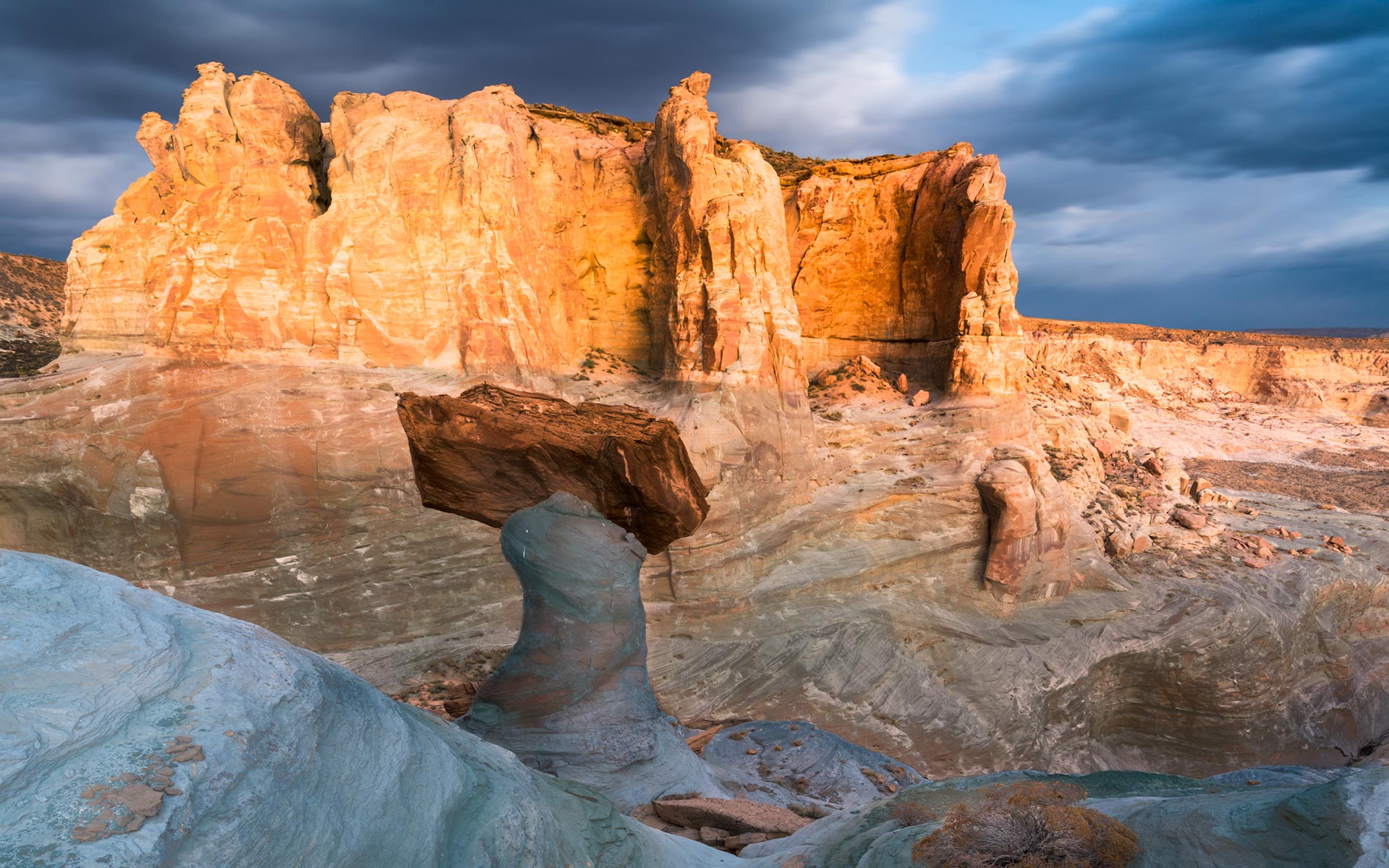
- Destinations
- AZ
- Around Page
- Stud Horse Point
In the area around Page most of the attractions are hidden until you get to study the surroundings. Lake Powell and the Glen Canyon Dam are pretty obvious and do not require any further introduction. You will see it at soon as you get there. Horseshoe Bend and the Upper and Lower Antelope Canyon will need minimal searching. There are other places that are small and not even known to many people living in the area and yet these places have a very special flair. Stud Horse Point is one of these very little unknown places in the surroundings of Page. As a photographer you should not miss it.
Stud Horse Point is a long ridge along US 89 and the southern tip of it has a very nice cluster of pedestal rocks which are located quite below the Utah state line. Half a dozen hoodoos with large cap rocks stand tall inside a depression, close to a rim overlooking the valley to the north with Lake Powell in the distance.
Getting to the Stud Horse Point
Starting in Page, take US 89 northwest, cross the Glen Canyon Dam bridge until you reach 5.6 miles later an old paved road located between mileposts 555 and 556. Turn left onto this road and follow it for about 0.8 mile, when the pavement ends. Turn again left and follow the small power line for 1.5 mile until you reach a “Y”. Take the left fork of it and 0.1 mile later you will encounter a second “Y”. This time take the right fork. After another 0.1 mile take an easily-missed sandy spur to the right. Follow it for 0.3 mile, go right at the next fork. You will be driving now along the Stud Horse Point rim and seeing to your right Lake Powell in the distance. Another 0.5 mile brings you to the car park, just above the pedestal rocks. The hoodoos are located slightly northwest walking down the depression (36°59’22” 111° 36’07”).
Taking shots:
Stud Horse Point is clearly a sunset and sunrise spot and it might be one of these places that is worthwhile to be visited at a full moon evening. The rocks take a nice glow at sunset and you might compose your image with the hoodoos in group or individually. A wide-angle lens or a short telephoto will work best here. ND grad filters will be of great help to tone down the bright sky.
Last update: June 20, 2011

